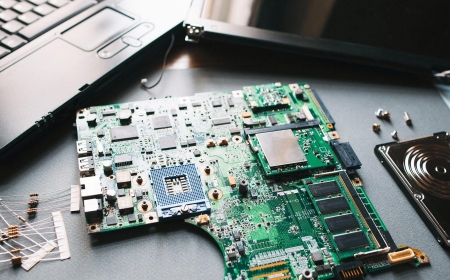Natural and Medical Approaches to Treating Autism
Explore natural and medical approaches to treating autism in this comprehensive guide. Learn how to support your child’s development with balanced, evidence-based therapies.

Introduction
If your child has recently been diagnosed, you might be searching for the best treatment for autism. With so much information out there, it can feel overwhelming to know where to begin. Autism Spectrum Disorder (ASD) affects every child differentlyso treatment plans must be individualized, flexible, and focused on long-term progress.
In recent years, families have been looking beyond just traditional therapies. Many are combining both holistic and clinical options to give their children the most comprehensive care. In this article, well explore Natural and Medical Approaches to Treating Autism and how they work together to support growth, learning, and independence.
Understanding Autism Spectrum Disorder (ASD)
Autism is a neurodevelopmental condition that affects how individuals communicate, interact socially, and process sensory information. Signs may include delayed speech, repetitive behaviors, challenges with eye contact, and sensitivity to sounds or textures.
ASD is a spectrum, which means it ranges in severity. One child might have difficulty with language but excel at visual learning, while another may need help with social skills but thrive in structured environments.
There is no single "cure" for autismbut with the right support, children can build meaningful relationships, grow in confidence, and develop crucial life skills.
Why Combining Approaches Matters
Modern autism therapy is no longer just about one methodits about creating a personalized, well-rounded plan that supports the whole child. Thats where blending natural and medical approaches to treating autism can make a powerful difference.
Lets explore what that looks like.
Medical Approaches to Treating Autism
1. Behavioral Therapies (ABA, ESDM, NDBI)
Applied Behavior Analysis (ABA) remains the most evidence-based and widely used treatment for autism. It focuses on encouraging positive behaviors and teaching skills in small, manageable steps.
Other models like the Early Start Denver Model (ESDM) and Naturalistic Developmental Behavioral Interventions (NDBI) add play and relationship-building to make therapy feel more engaging.
Benefits:
-
Builds communication, focus, and daily living skills
-
Data-driven progress tracking
-
Highly customizable to each child
2. Speech and Language Therapy
For children with limited or unclear speech, speech-language pathologists help build:
-
Vocabulary and sentence formation
-
Social communication (e.g., greetings, turn-taking)
-
Use of alternative communication (like PECS or AAC devices)
In 2025, many therapists now use AI-enhanced apps that adapt speech exercises in real time based on the childs progress.
3. Occupational Therapy (OT)
Occupational therapy helps children gain independence in daily activities like:
-
Dressing
-
Feeding
-
Writing
-
Managing sensory sensitivities
Therapists also work on emotional regulation, attention, and motor coordination.
4. Medications (When Needed)
While theres no medication that cures autism, doctors may prescribe certain medications to manage related symptoms, including:
-
Anxiety
-
Aggression
-
Hyperactivity
-
Sleep difficulties
All medications should be carefully monitored and used only under the guidance of a developmental pediatrician or psychiatrist.
Natural Approaches to Treating Autism
Many families are turning to natural therapies to support traditional treatment and improve overall wellness. These approaches can complement medical strategies and make day-to-day life easier and more balanced.
1. Diet and Nutrition
There is growing interest in how gut health and food sensitivities may influence behavior in children with autism. Though not universally effective, some families report positive results with:
-
Gluten-free/casein-free (GFCF) diets
-
Removing artificial dyes or preservatives
-
Adding omega-3 fatty acids or probiotics
Important: Always consult with a nutritionist or pediatrician before making major dietary changes.
2. Supplement Support
Supplements like magnesium, zinc, B-vitamins, and fish oil are often used to support brain health and reduce anxiety or hyperactivity. Some families also explore natural remedies like:
-
Melatonin for sleep
-
CBD oil (under supervision)
-
Herbal calming blends
Make sure to discuss any supplements with your childs doctor to avoid interactions with other treatments.
3. Sensory Integration Therapy
Children with autism often have difficulty processing sensory inputsuch as loud sounds, bright lights, or clothing textures. Natural sensory therapy includes:
-
Weighted blankets
-
Swings or climbing equipment
-
Tactile play (sand, rice, water)
These tools help regulate sensory responses and improve focus, behavior, and mood.
4. Mindfulness and Movement
Incorporating calm, structured physical activity can help children stay grounded and improve self-regulation.
Some examples include:
-
Yoga for kids with autism
-
Breathing and relaxation exercises
-
Animal-assisted therapy (equine, dogs)
-
Outdoor play and nature walks
These approaches are often overlooked but can be incredibly powerful when made part of a daily routine.
5. Parent-Led Interventions
Parents are a childs first and most consistent teacher. Natural strategies like:
-
Creating visual schedules
-
Using calm-down corners
-
Modeling social behavior
-
Using consistent, clear language
can make a major difference in a childs progress.
Many programs now offer remote parent coaching, so caregivers can learn to use professional therapy techniques at home.
Real-Life Example: Mias Journey
Mia, age 5, was diagnosed with moderate autism at 2. Her parents initially started with ABA and speech therapy but later added dietary changes, sensory play, and kids' yoga.
After one year of combining natural and medical approaches to treating autism, Mia began using short sentences, participated in circle time at preschool, and even started to enjoy brushing her teethsomething she once resisted.
Her mom says:
We stopped thinking of therapy as something separate from daily life. Everything from snack time to bathtime became an opportunity to learn and connect.
How to Create a Balanced Treatment Plan
Creating a care plan doesnt mean choosing between medical or natural methods. The most successful plans:
-
Involve professionals (therapists, pediatricians, specialists)
-
Consider your childs specific needs and sensitivities
-
Include both structured therapy and everyday learning
-
Adjust over time as your child grows
Work with a team that respects your goals, values your input, and treats your child as a whole person.
Final Thoughts
There is no perfect formula when it comes to autismbut there are many effective strategies. By understanding and combining natural and medical approaches to treating autism, families can build personalized care plans that nurture every part of a childs development.
Remember: you dont have to figure it all out alone. At Kickstart Therapy, we help families discover and integrate the best of both worldscreating thoughtful, flexible treatment plans that truly support each childs growth.
Conclusion
Autism treatment isnt a one-lane road. Its a journey filled with both science and compassion, structure and play, innovation and instinct. Whether youre exploring therapies for the first time or updating your childs current plan, know that you have optionsand support.
The future is bright when we treat the whole child. Explore more in Natural and Medical Approaches to Treating Autism and discover how balanced care can unlock your childs fullest potential.


























